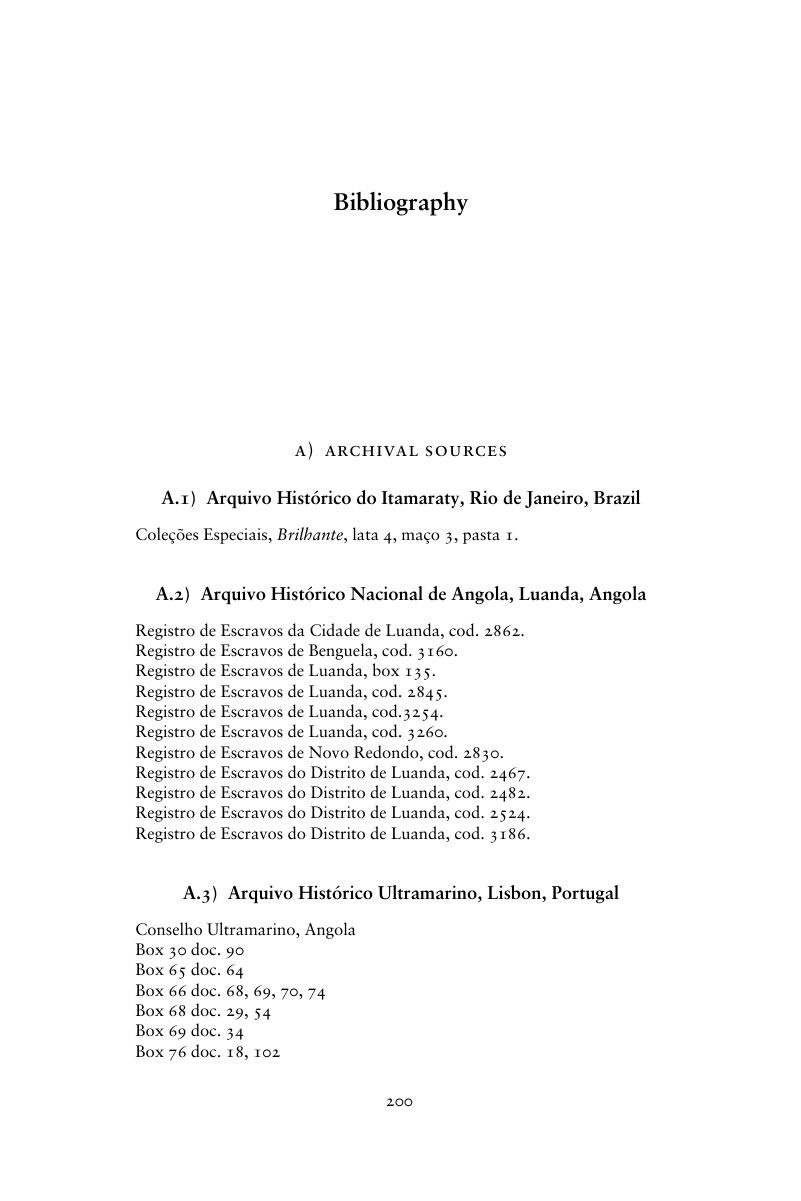Book contents
- The Atlantic Slave Trade from West Central Africa, 1780–1867
- Cambridge Studies on the African Diaspora
- The Atlantic Slave Trade from West Central Africa, 1780–1867
- Copyright page
- Dedication
- Contents
- Figures
- Tables
- Preface
- Acknowledgments
- Abbreviations
- Introduction
- 1 The Atlantic Slave Trade in the Century of Abolition
- 2 The Commercial Organization of the Slave Trade
- 3 The Origins of Slaves Leaving West Central Africa
- 4 The Demographic Profile of the Enslaved Population
- 5 African Patterns of Consumption
- 6 Experiences and Methods of Enslavement
- Conclusion
- Book part
- Bibliography
- Index
- References
Bibliography
Published online by Cambridge University Press: 13 July 2017
- The Atlantic Slave Trade from West Central Africa, 1780–1867
- Cambridge Studies on the African Diaspora
- The Atlantic Slave Trade from West Central Africa, 1780–1867
- Copyright page
- Dedication
- Contents
- Figures
- Tables
- Preface
- Acknowledgments
- Abbreviations
- Introduction
- 1 The Atlantic Slave Trade in the Century of Abolition
- 2 The Commercial Organization of the Slave Trade
- 3 The Origins of Slaves Leaving West Central Africa
- 4 The Demographic Profile of the Enslaved Population
- 5 African Patterns of Consumption
- 6 Experiences and Methods of Enslavement
- Conclusion
- Book part
- Bibliography
- Index
- References
Summary

- Type
- Chapter
- Information
- The Atlantic Slave Trade from West Central Africa, 1780–1867 , pp. 200 - 222Publisher: Cambridge University PressPrint publication year: 2017



